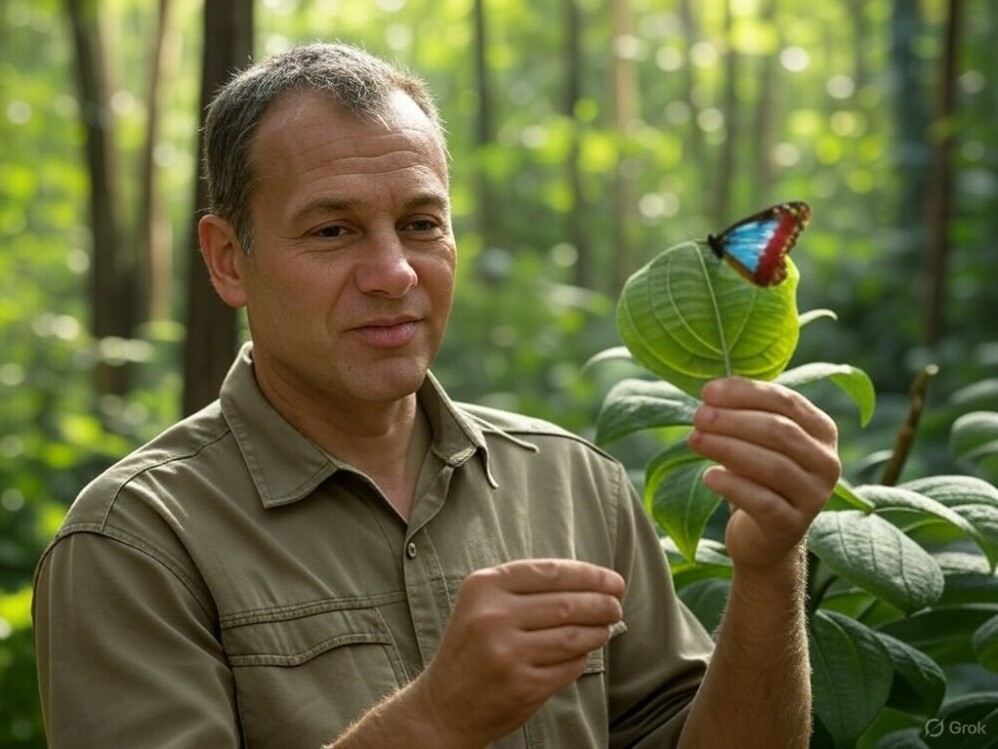Butterflies are more than just colorful eye-candy fluttering around. They play a crucial role in pollination and are important indicators of environmental health. However, their numbers are dropping, and fast.
The reasons for this decline are varied. Habitat loss is a big one. As forests and natural meadows shrink or disappear due to urban development, agriculture, and deforestation, butterflies lose their homes and feeding grounds. Without the right plants and environment, their survival becomes a challenge.
Climate change is also messing with butterfly populations. Shifts in weather patterns affect their migration routes and breeding cycles. Some species might be unable to adapt quickly enough to survive these rapid environmental changes. It’s nature trying to keep up with the fast-paced changes we humans are throwing its way.
And let’s not ignore pesticides. While they might keep crops safe from pests, these chemicals can harm butterflies directly and indirectly by killing off the plants and insects they depend on.
To see this problem clearly, consider the plight of the Monarch butterfly. Famous for its epic migration across North America, the Monarch has seen its population fall due to habitat destruction and climate shifts. Their story is just one example of what many butterfly species face worldwide.
How Zoos Contribute to Butterfly Conservation Efforts
Zoos might seem like a place you visit only to marvel at animals, but they’re doing impressive work behind the scenes to help butterflies. Believe it or not, many zoos establish breeding programs aimed at increasing the populations of at-risk butterfly species. These programs focus on maintaining genetic diversity and preparing butterflies for possible reintroduction into their natural habitats.
Collaboration is another key area where zoos shine. They work hand-in-hand with conservationists, universities, and governmental bodies to share data and insights. This teamwork helps in crafting effective conservation strategies and tackling the pressing issues affecting butterfly populations.
Zoos also invest in educating the public about butterflies and why they matter. Through interactive exhibits and programs, they spark interest and understanding among kids and adults alike. By turning interest into action, they drive community involvement in butterfly conservation efforts.
A great example is the participation in citizen science projects. Zoos encourage visitors to take part in butterfly counts or help with habitat restoration, making conservation not just a passive observation but an active endeavor for the community. These initiatives don’t just educate; they inspire generations to become advocates for nature.
Innovative Conservation Strategies in Modern Zoos
Zoos today are much more than places where animals are held for public viewing. They’re hubs of innovation, especially when it comes to conservation strategies for butterflies. One major area where zoos have stepped up is through the use of technology.
Modern zoos are leveraging tech like tracking devices and data analysis systems to monitor butterfly movements and health. These tools help zookeepers and researchers understand habits and needs better, paving the way for more effective conservation strategies.
Creating biodomes and dedicated butterfly sanctuaries within zoos offer controlled environments where butterflies can thrive. These spaces mimic natural habitats and protect butterflies from outside threats like predators and harsh weather. Here, they can breed and feed safely, almost as if they were in the wild.
There’s no shortage of success stories to showcase. Take, for instance, the efforts by zoos creating replicas of rainforest habitats, resulting in the successful breeding of rare butterfly species. Such projects prove that with the right resources and planning, zoos can make a significant impact.
Innovation in zoos doesn’t stop at the confines of the zoo itself. They also engage the community through interactive and immersive experiences. By involving visitors in conservation projects, zoos promote a sense of responsibility and awareness, emphasizing that everyone can play a part in conservation efforts.
Challenges and Opportunities in Zoo-Driven Butterfly Conservation
Despite the great strides zoos are making in conservation, they face a unique set of challenges. Funding is a major issue. Conservation programs require substantial investment in technology, infrastructure, and skilled personnel. Zoos often depend on donations and public funding, which can fluctuate, impacting the sustainability of their initiatives.
Another hurdle is balancing visitor engagement with conservation efforts. Zoos aim to educate and inspire, but too much human interaction can stress butterflies and disrupt their habitats. Creating environments where butterflies can breed safely yet remain accessible for educational purposes is a delicate balance to maintain.
Staff expertise is crucial. Conserving butterflies isn’t just about putting them in an enclosure. It requires veterinarians, entomologists, and horticulturists working together to ensure the health and vitality of the butterflies and the plants they depend on.
However, these challenges present opportunities for growth and collaboration. By partnering with universities and research institutions, zoos can tap into new funding streams and academic expertise. This not only drives innovation but also expands education and research opportunities.
Encouraging local community involvement can also help. Whether it’s through volunteer programs or school partnerships, involving the public fosters a sense of ownership and support for conservation efforts. Grassroots participation can lead to powerful advocacy for protecting natural habitats beyond the zoo walls.
Even the challenge of funding can be turned into an opportunity by creating unique experiences or virtual tours. These draw in visitors worldwide, providing additional income while spreading awareness about butterfly conservation.
Conclusion: Envisioning a Bright Future for Butterflies Through Zoo Collaboration
Zoos have positioned themselves as key players in the conservation of butterflies, taking on challenges with the same vibrancy and energy that butterflies bring to our ecosystems.
Looking ahead, the successful integration of education, technology, and community participation could set a benchmark for butterfly conservation worldwide. Zoos have the potential to transform these strategies into robust, long-term plans that ensure not just survival, but thriving butterfly populations.
Engaging more deeply with global conservation efforts can amplify their impact. By joining forces with international organizations, zoos can spearhead global initiatives that target habitat preservation and species restoration on a larger scale.
Community outreach programs remain essential. Encouraging public participation in conservation projects, citizen science efforts, and habitat restoration events fortifies the community’s role in ongoing efforts.
Together, zoos and communities can create a ripple effect that extends far beyond zoo grounds, fostering a culture of conservation that protects and cherishes butterfly species for generations to come.




Leave a Reply